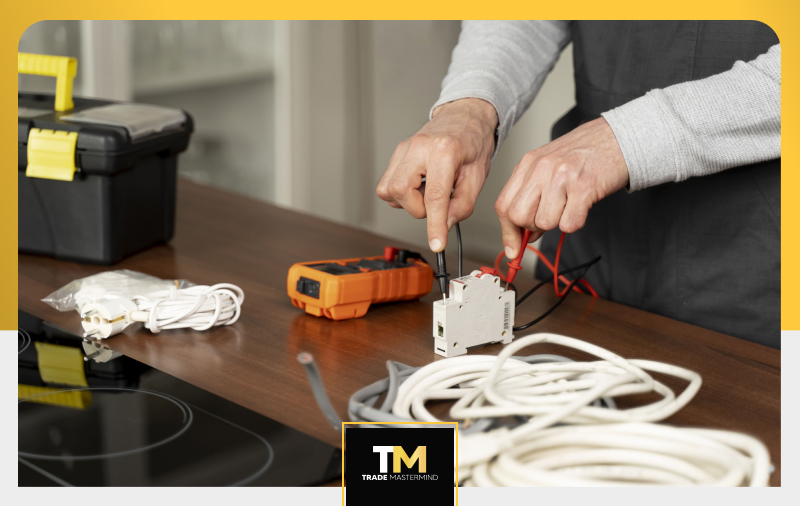As the colder months approach, a reliable heating system is essential for maintaining a comfortable and safe home environment. However, like all appliances, heating systems age and become less efficient over time. Recognizing the signs that your heating system needs replacing can save you from unexpected breakdowns and costly repairs. Here are ten key signs that indicate it’s time to consider replacing your heating system and making an upgrade.
1. Age of Your System
What to Look For
The age of your heating system is a primary indicator of its remaining lifespan. Furnaces and boilers typically last between 15 to 20 years, while heat pumps and air conditioners have a lifespan of around 10 to 15 years.
Why It Matters
Older systems become less efficient and more prone to breakdowns. Even if your old system seems to be functioning, it may be costing you more in energy bills than a new, energy-efficient model would.
Solution
If your furnace or boiler is over 15 years old, or your heat pump or air conditioner is more than 10 years old, consider replacing it. Upgrading to a new system can significantly improve energy efficiency and reduce your carbon footprint.
2. Frequent Repairs
What to Look For
If you find yourself constantly calling for repairs, it’s a sign that your heating system is nearing the end of its life.
Why It Matters
Frequent repairs not only disrupt your comfort but also add up financially. At some point, the cost of repairs will exceed the value of the system itself.
Solution
A good rule of thumb is that if the total cost of repairs over the past year is more than half the cost of a new system, it’s time to consider a replacement. Upgrading to a new system can provide peace of mind and reduce the hassle of dealing with constant breakdowns.
3. Rising Energy Bills
What to Look For
A sudden or gradual increase in your energy bills, despite maintaining the same usage habits, can indicate that your heating system is losing efficiency.
Why It Matters
Older systems often become less efficient due to wear and tear, leading to higher energy consumption. This means you’re paying more to achieve the same level of comfort.
Solution
Compare your energy bills to previous years. If you notice a significant increase, it may be time to invest in a new, energy-efficient heating system. The benefits of upgrading a heating system include lower monthly bills and a reduced environmental impact.
4. Uneven Heating
What to Look For
If some rooms in your home are too hot while others are too cold, it’s a sign that your heating system is not distributing heat evenly.
Why It Matters
Uneven heating can be caused by duct problems, inadequate insulation, or an inefficient heating system. This not only affects comfort but also indicates that your system is working harder than it should, leading to higher energy bills.
Solution
Have your ductwork inspected for leaks and consider upgrading your insulation. If these measures don’t resolve the issue, it may be time to replace your heating system with a more efficient model that provides consistent heating throughout your home.
5. Unusual Noises
What to Look For
Strange noises such as banging, rattling, popping, or screeching coming from your furnace or boiler can indicate serious mechanical issues.
Why It Matters
These noises often signify that components within the system are failing or worn out. Ignoring them can lead to further damage and eventually a complete system failure.
Solution
Contact a professional HVAC technician to inspect the system. If the noises persist even after repairs, it may be more cost-effective to replace the entire unit.
6. Yellow or Orange Burner Flame
What to Look For
If you have a gas furnace, the burner flame should be blue. A yellow or orange flame indicates incomplete combustion, which can be a sign of carbon monoxide production.
Why It Matters
Carbon monoxide is a deadly, odorless gas. A yellow or orange flame is a serious safety hazard that requires immediate attention.
Solution
Turn off your furnace immediately and contact a qualified HVAC technician to inspect the system. In most cases, a yellow or orange flame indicates that the furnace is beyond repair and needs to be replaced.
7. Humidity Problems
What to Look For
If your home feels too dry in the winter or too humid in the summer, it could be a sign of poor equipment operation or leaky ductwork.
Why It Matters
Improper humidity levels can affect your health and comfort, as well as damage your home’s structure.
Solution
Consider sealing your ducts and upgrading to a new heating system with better humidity control. Modern systems are designed to maintain optimal humidity levels year-round.
8. Excessive Dust
What to Look For
If you notice an unusual amount of dust in your home, especially around air vents, it could indicate leaky ducts.
Why It Matters
Leaky ducts can pull particles and air from attics, crawl spaces, and basements, distributing them throughout your house. This not only affects air quality but also reduces the efficiency of your heating system.
9. Corrosion
What to Look For
Visible corrosion or rust on your boiler or furnace is a sign of deterioration.
Why It Matters
Corrosion can lead to leaks, reduced efficiency, and eventually system failure.
Solution
If your boiler or furnace shows signs of corrosion, it’s generally best to replace it. Continuing to operate a corroded system can be dangerous and costly in the long run.
10. Low Home Energy Yardstick Score
What to Look For
ENERGY STAR provides a Home Energy Yardstick tool that allows you to compare your home’s energy use to similar homes. If your score is below five, it means your energy use is above average.
Why It Matters
A low score indicates that your home is not energy-efficient, and you’re likely paying more than you need to on energy bills.
Solution
Identify areas where you can improve energy efficiency, such as upgrading your heating system. The benefits of upgrading a heating system not only include lower energy bills but also improved home comfort and reduced environmental impact.
Final Take
The benefits of upgrading a heating system extend beyond just avoiding breakdowns and reducing energy bills. Modern systems offer enhanced features such as smart thermostats, improved air filtration, and quieter operation. They are also more environmentally friendly, using less energy and reducing carbon emissions. So, if you are thinking about getting it done, you can always consider taking the assistance Trade Mastermind. Good luck!







